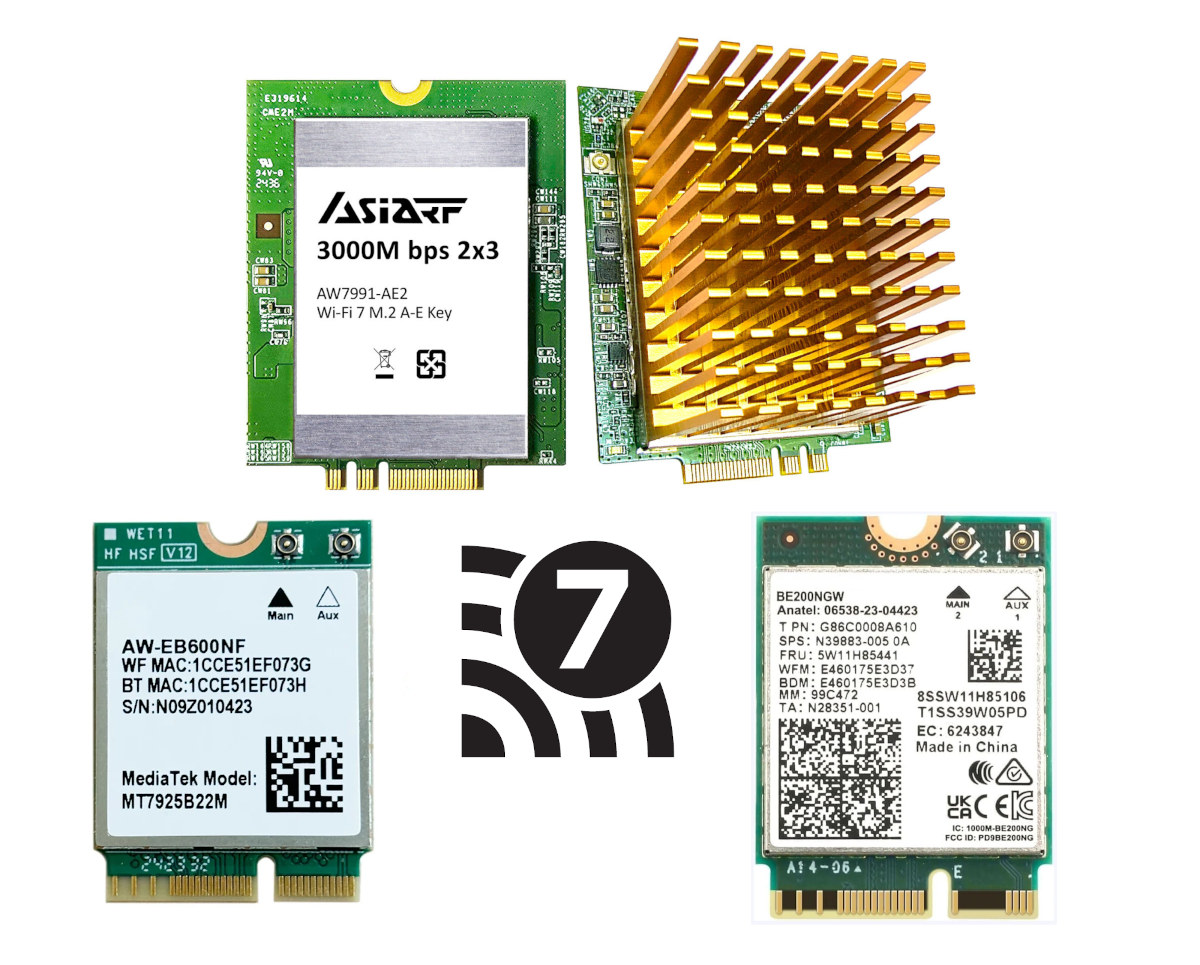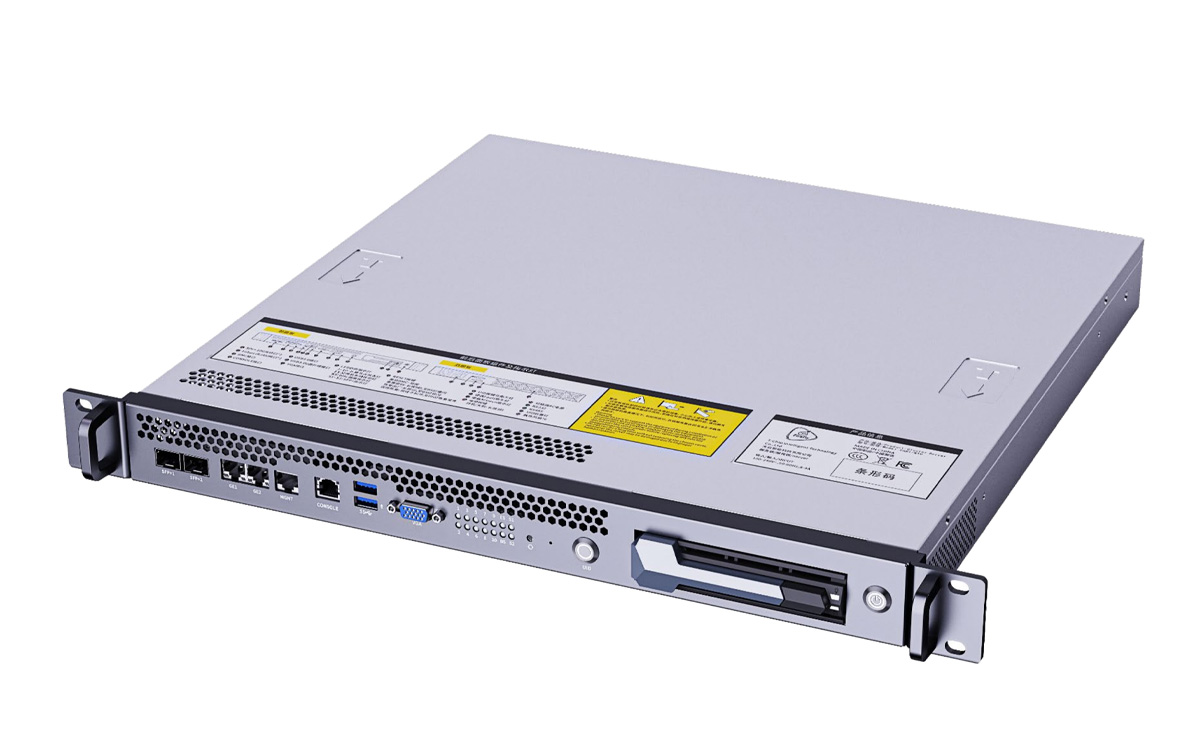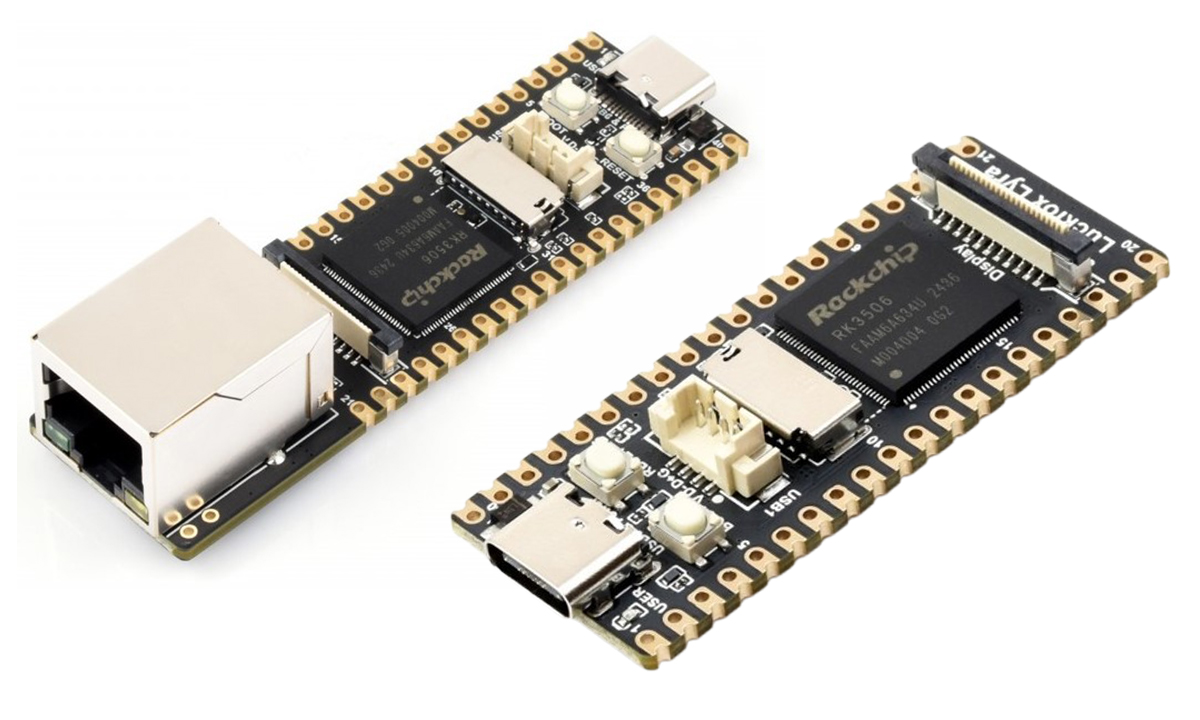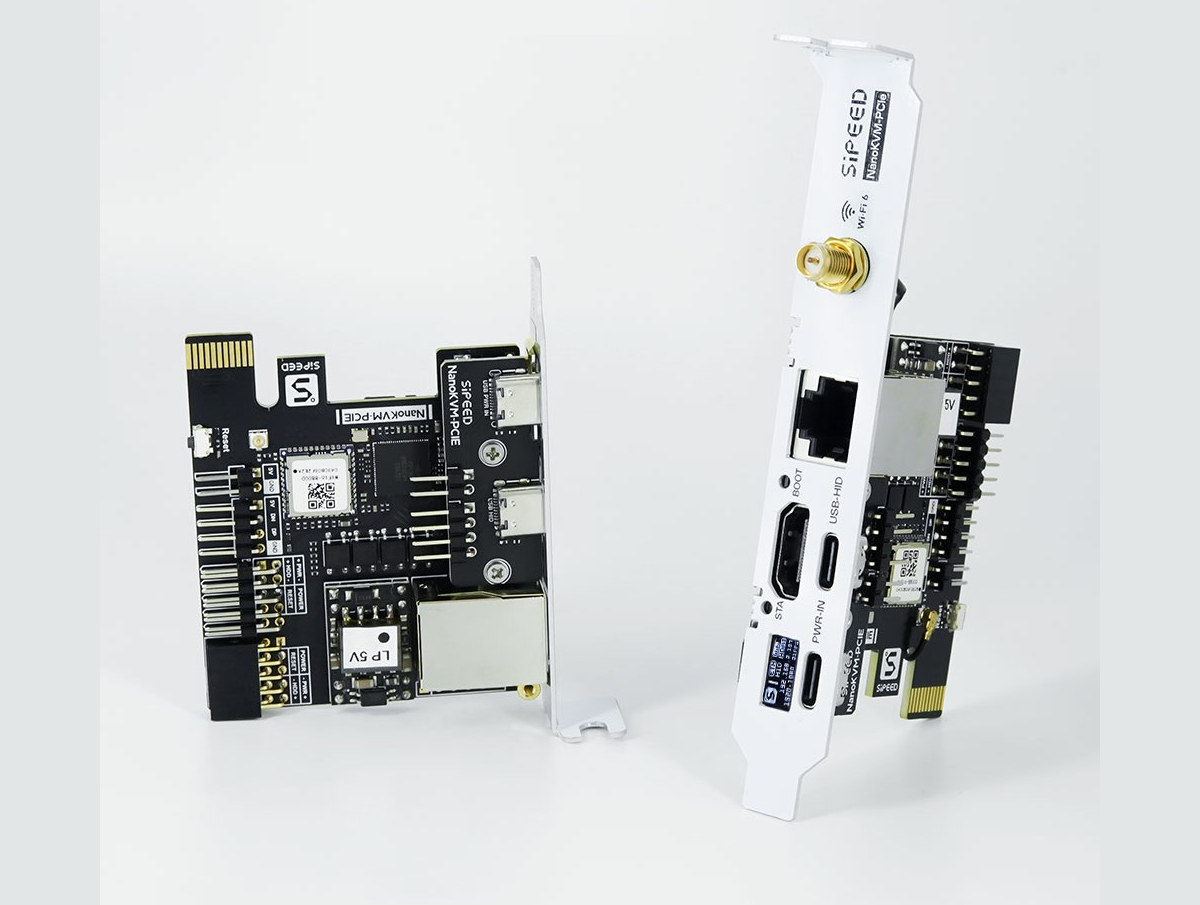We have already seen WiFi 7 mini PCIe and M.2 modules from Compex for business customers, but I’ve recently noticed AsiaRF AW7991-AE2 M.2 module rated BE5000 offers an affordable alternative design for access points for just $58 plus shipping. But adding WiFi 7 to a consumer device can be cheaper than I expected as Intel BE200 or MediaTek MT7925-based M.2 modules can be purchased for around $20 to $30. Let’s have a look at some of the options available. AsiaRF AW7991-AE2 dual-band WiFi 7 “access point” M.2 module AsiaRF AW7991-AE2 specifications: SoC – MediaTek MT7991AV (Filogic 660?) with 32bit RISC-V MCU for Wi-Fi protocol and Wi-Fi offload Chipset – MT7976C WiFI 6 3×3 MIMO chipset System Memory – 8MB WLAN IEEE 802.11a/b/g/n/ac/ax/be compliant Frequency bands 2.4GHz – Bandwidth: 20/40MHz; 2T2R 2ss 5GHz – Bandwidth:20/40/80/160MHz; T3R 3ss Dual-Band Dual Concurrent (DBDC) Supports up to 4096-QAM Data rate of up to 688Mbps […]
Firefly’s CSB1-N10 series AI cluster servers can deliver up to 1000 TOPS of AI power with Rockchip or NVIDIA Jetson Modules
Firefly has recently introduced the CSB1-N10 series AI cluster servers designed for applications such as natural language processing, robotics, and image generation. These 1U rack-mounted servers are ideal for data centers, private servers, and edge deployments. The servers have multiple computing nodes, featuring either energy-efficient processors (Rockchip RK3588, RK3576, or SOPHON BM1688) or high-performance NVIDIA Jetson modules (Orin Nano, Orin NX). With 60 to 1000 TOPS AI power, the CSB1-N10 servers can handle the demands of large AI models, including language models like Gemma-2B and Llama3, as well as visual models like EfficientVIT and Stable Diffusion. CSB1-N10 series specifications All CSB1-N10 AI servers have the same interfaces, and the only differences are the CPU, memory, storage, multimedia, AI capabilities, and related software support. So it’s likely Firefly has made Rockchip system-on-modules compatible with NVIDIA Jetson SO-DIMM form factor, and indeed we previously noted that Firefly designed Core-1688JD4, Core-3576JD4, or Core-3588JD4 […]
Murata Type 2FR is the world’s smallest tri-radio IoT module with Wi-Fi 6, Bluetooth 5.4, and Thread connectivity
Murata has recently launched the world’s smallest tri-radio IoT modules, the Type 2FR/2FP series, as well as the Type 2KL/2LL series for hosted solutions. These compact modules feature tri-radio communication, including Wi-Fi 6, Bluetooth 5.4, and Thread, with Matter provisioning for interoperability. The 2FR/2FP series is considered the world’s smallest module (12.0 x 11.0 x 1.5mm) of this type with a built-in MCU, making it ideal for low-cost and highly integrated solutions. It prioritizes security with the latest cybersecurity standards and compatibility with the Matter ecosystem. On the other hand, the 2KL/2LL series is designed to work with high-performance processors running Linux or RTOS. These modules provide reliable tri-radio communication with advanced capabilities. Both series are designed for applications, including smart homes, buildings, industrial automation, healthcare, and more, with features like low-power operation, extended battery life, and reduced component count. Murata Type 2FR/2FP modules specifications: MCU – NXP RW610 or RW612 […]
Luckfox Lyra boards feature Rockchip RK3506G2 triple-core SoC, display interface, optional Ethernet port
The Luckfox Lyra boards feature a Rockchip RK3506G2 triple-core Arm Cortex-A7 SoC with one Cortex-M0 real-time core, 128MB on-chip DDR3, a MIPI DSI display interface, and built on a 22nm process. Three versions are available with the Luckfox Lyra, Lyra B (with 256MB flash), and Luckfox Lyra Plus offering similar features, but the longer Plus model also adds a 10/100Mbps Ethernet RJ45 connector besides having 256MB SPI NAND flash. These are Luckfox’s first boards featuring the RK3506G2 processor, offering Ethernet connectivity and a display interface. But it’s not quite the first Arm Linux board from the company with Ethernet and a display interface, and we covered the Luckfox Pico Ultra micro development board all based on a Rockchip RV1106G3 SoC earlier this year. The company also introduced the similar-looking LuckFox Pico Pro and Pico Max boards powered by an RV1006G2 SoC in February, but instead of a display interface, they […]
I-Pi SMARC Amston Lake development kit features Intel Atom x7433RE SoC, 8GB LPDDR5, two Raspberry Pi GPIO headers
ADLINK’s I-Pi SMARC Amston Lake is a fanless development kit based on SMARC 2.1-compliant system-on-module with an Intel Atom X7433RE quad-core SoC, 8GB LPDRR5 memory, and up to 256GB eMMC flash, plus a carrier board with dual 2.5GbE with TSN, two Raspberry Pi-compatible GPIO headers, and a range of other interfaces. Those include 4-lane MIPI DSI, HDMI, eDP, and dual-channel LVDS display interfaces, two MIPI CSI camera interfaces, a 3.5mm audio jack, four USB Type-A ports, three PCIe M.2 sockets for storage, wireless, and cellular connectivity. I-Pi SMARC Amston Lake devkit specifications: LEC-ASL SMARC 2.1 module Amston Lake SoC – Intel Atom x7433RE quad-core processor with 6MB cache, 32EU Intel UHD graphics; 9W TDP System Memory – 8GB LPDDR5 Storage – 32GB to 256GB eMMC flash Host interface – 314-pin MXM edge connector Storage – 1x SATA III (6 Gbps) Display – Dual-channel 18-/24-bit LVDS Camera – 2-lane MIPI CSI, […]
MECOOL KM9PRO MAX 4K Streaming Box runs Google TV 12.0 on Realtek RTD1325 SoC
MECOOL KM9PRO MAX 4K is a Google TV 12.0 streaming box based on the Realtek RTD1325 quad-core Cortex-A55 SoC which we initially found in the Formuler Z Mini 4K Android 12 dongle. Since it’s a more traditional TV box as opposed to an HDMI dongle, it adds features like 10/100Mbps Ethernet, optical S/PDIF output, an AV composite and audio jack, two USB 2.0 ports, while keeping the 4K-capable HDMI 2.1 port and WiFi 5 and Bluetooth 5.0 connectivity. The KM9PRO Max 4K also comes with a larger 32GB eMMC flash. MECOOL KM9PRO MAX 4K specifications: SoC – Realtek RTD1325 CPU – Quad-core Arm Cortex-A55 @ 1.7GHz with 512KB L3 cache; 20,000 DMIPS GPU – Arm Mali-G57 MC1 with OpenGL ES 3.2 VPU – 4Kp60 10-bit AV1, VP9, H.265 video decoder System Memory – 2GB LPDDR4 Storage – 32GB eMMC flash Video & Audio Output HDMI 2.1 up to 4K resolution […]
SignalSDR Pro is a high-performance software-defined radio (SDR) in Raspberry Pi form factor (Crowdfunding)
The SignalSDR Pro is a Raspberry Pi-sized SDR that brings a credit-card-sized twist to software-defined radios (SDRs). It is a compact, streamlined device suitable for tasks ranging “from signal processing and spectrum analysis to communication systems and beyond.” The SignalSDR Pro builds on the Analog Devices AD9361 radio transceiver and the AMD Zync 7020 SoC into a credit-card format reminiscent of Raspberry Pi single-board computers. The Raspberry Pi-sized SDR also features a 40-pin GPIO header for expansion with other hardware components and added functionality. The device offers a 70MHz – 6GHz tuning range, 12-bit sample rate, 61.44MHz RF bandwidth, and two full-duplex TX/RX channels via four I-PEX antenna connectors. It is also capable of emulating other SDR hardware such as the ADALM-PLUTO and USRP B210, making it easier to integrate into pre-existing workflows. The SignalSDR Pro is a mid-range alternative to entry-level SDR options such as the AntSDR E200, KrakenSDR, […]
Sipeed NanoKVM-PCIe is an inexpensive KVM over IP solution with optional WiFi 6 and PoE support
Sipeed NanoKVM-PCIe is a variation of the NanoKVM KVM-over-IP solution introduced last summer, but instead of being a tiny Cube with USB-C power, the new model can be powered through the PCIe slot from the host (as well as USB-C) and adds optional WiFi 6 and PoE functionality. While it’s not based on the LicheePi Nano SBC like the NanoKVM, it relies on the same SOPHGO SG2002 RISC-V/Arm/8051 SoC and offers many of the same ports in a different form factor including 10/100Mbps Ethernet, two USB-C ports one for HID, the other for power, a small OLED information display, and an HDMI input port supporting up to 1080p60. NanoKVM-PCIe specifications: SoC – SOPHGO SG2002 Main core – 1GHz 64-bit RISC-V C906 or Arm Cortex-A53 core (the latter is likely not used here) Minor core – 700MHz 64-bit RISC-V C906 core Low-power core – 25 to 300MHz 8051 MCU core VPU […]










